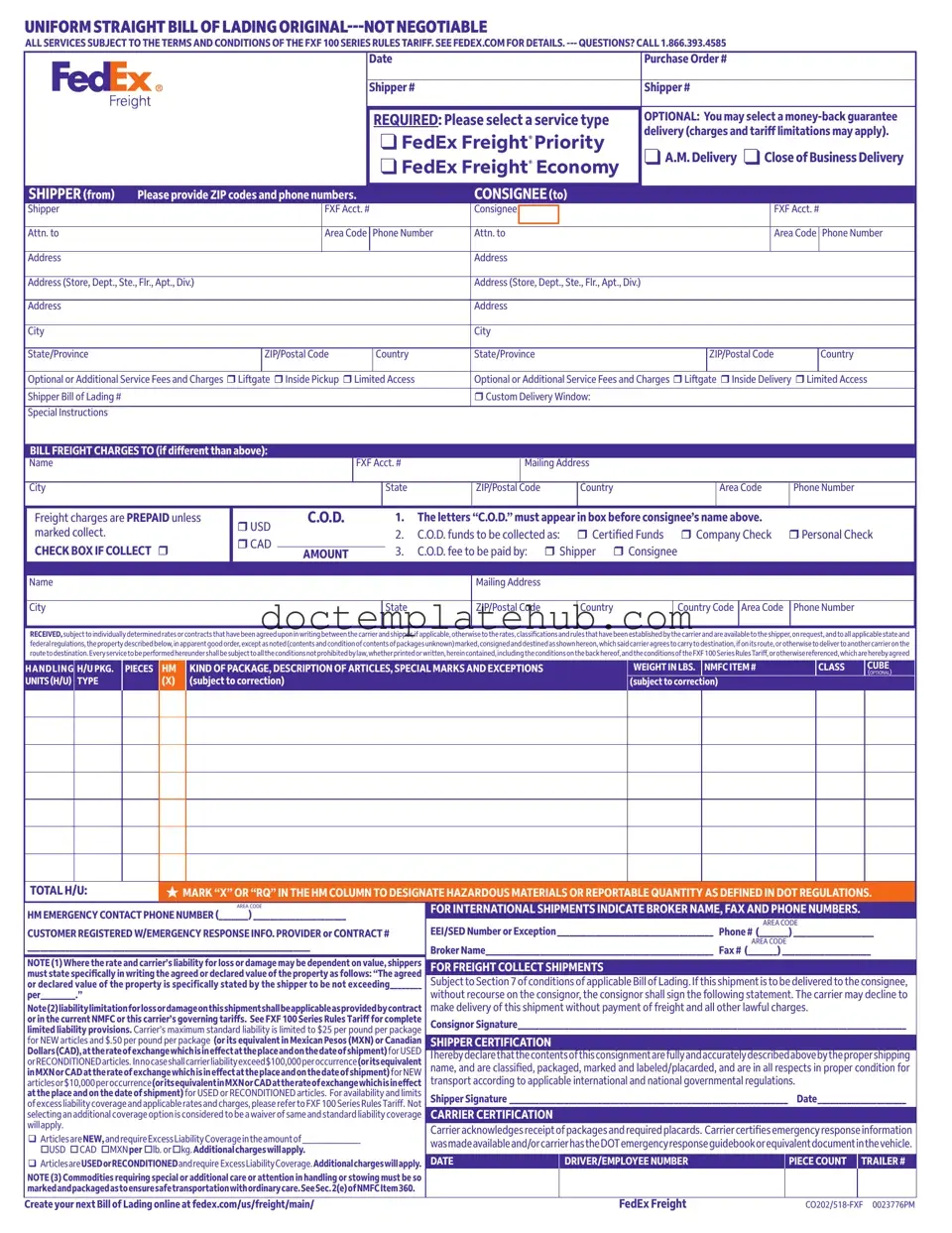The FedEx Bill of Lading is similar to the Uniform Commercial Invoice. Both documents serve as a record of the transaction between the seller and buyer. The commercial invoice details the goods being shipped, their value, and the terms of sale. Like the Bill of Lading, it is crucial for customs clearance and can be used to determine the appropriate duties and taxes. Both documents must accurately reflect the shipment details to avoid delays and ensure compliance with regulations.
Another document comparable to the FedEx Bill of Lading is the Air Waybill (AWB). The AWB is used for air freight shipments and acts as a contract between the shipper and the airline. It outlines the terms of carriage and serves as a receipt for the goods. Similar to the Bill of Lading, it includes information about the sender, receiver, and the nature of the goods being transported. Both documents ensure that the shipment is tracked and delivered to the correct destination.
The shipping receipt is another document that shares similarities with the FedEx Bill of Lading. A shipping receipt provides proof of shipment and includes details such as the shipping date, destination, and a description of the goods. Like the Bill of Lading, it is essential for record-keeping and can be used to resolve disputes regarding shipment conditions or delivery. Both documents help establish accountability during the shipping process.
The Packing List is also akin to the FedEx Bill of Lading. This document details the contents of a shipment, including item descriptions, quantities, and weights. While the Bill of Lading serves as a contract for transportation, the Packing List ensures that the correct items are being shipped and received. Both documents are vital for inventory management and help prevent errors during the shipping process.
Another similar document is the Freight Bill. This document outlines the charges associated with transporting goods and is typically issued by the carrier. Like the FedEx Bill of Lading, it contains information about the shipment, including weight, dimensions, and destination. The Freight Bill also serves as a request for payment, making it essential for financial tracking and ensuring that the shipping costs are settled appropriately.
The Delivery Receipt is also comparable to the FedEx Bill of Lading. This document is signed by the consignee upon receiving the shipment, confirming that the goods have been delivered in good condition. Similar to the Bill of Lading, it acts as proof of delivery and can be used in case of disputes regarding the condition of the goods upon arrival. Both documents are crucial for maintaining transparency in the shipping process.
The Export Declaration is another document that shares similarities with the FedEx Bill of Lading. This document is required for international shipments and provides information about the goods being exported, including their value and destination. Like the Bill of Lading, it is essential for customs clearance and compliance with international shipping regulations. Both documents help facilitate the smooth transit of goods across borders.
Lastly, the Certificate of Origin is akin to the FedEx Bill of Lading. This document certifies the country in which the goods were manufactured and is often required for international trade. Similar to the Bill of Lading, it plays a critical role in customs clearance and can affect tariffs and duties. Both documents ensure that shipments comply with international trade laws and regulations.
